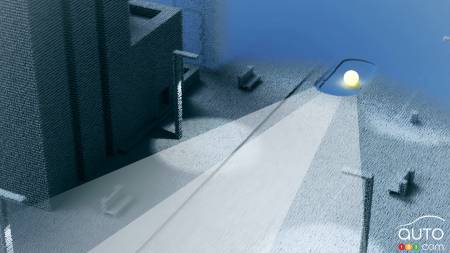Volvo is readying the launch of its new flagship SUV, the all-electric EX90, set to replace the XC90. Today we were introduced to a first innovation planned for the model.
While we were anticipating something to do with the electric drive system of the upcoming EX90 (an all-electric SUV replacing the current XC90 as the brand's flagship model), Volvo’s announcement today actually previewed another technological advance planned for the future electric model.
Known worldwide for its ground-breaking safety innovations and safe vehicles, Volvo rightly sees itself as a leader in the field. This is evidenced by the many awards it has won over the years for the structural and then passive safety features found in its vehicles.
In 2022, of course, the entire automotive industry offers innovative safety solutions, so to stand still is to fall behind.
On November 9, Volvo will officially introduce the EX90, a model that marks the beginning of a new era for the Swedish manufacturer, while continuing the brand's philosophy of safety, quality and innovation.
Understanding the human experience and improving on-board radar systems will thus be a focus of the next EX90. Say hello to the Driver Understanding System.
The tech underpinning this system is designed to allow the vehicle to analyze every move the driver makes. There are many distractions behind the wheel today, and fatigue, stress, passengers and children all impact on concentration. The objective of Volvo's new safety system is to analyze human behavior to reduce the risk of accidents.
Browse cars for sale available near you

How does it do this? Sensors and interior cameras will continuously analyze your level of concentration on the road. The way you look at the road, of course, but also the stability of the car's steering and the repeated straightening of the steering wheel can indicate fatigue, medical distress or even drunkenness.
Depending on what it detects, the car will send a first signal in the form of a vibration and then a sound signal increasing according to the gravity. In extreme cases, the car will be able to stop safely on the side of the road while sending an emergency message to authorities.
“By basing its calculations on our research findings, the sensing system allows our cars to identify whether the driver’s ability is impaired, perhaps due to drowsiness, distraction or even intoxication, and to offer extra assistance in a way that best suits the situation.”
- Emma Tivesten, Senior Technical Expert at Volvo's Safety Center

Another new feature planned for the EX90 is Volvo's unique new advanced sensor package, a system that includes eight cameras, five radars, 16 ultrasonic sensors and an advanced LiDAR sensor working in sync to maximize safety.
Volvo believes the LIDAR sensor alone will be able to reduce serious accidents by up to 20% and collision avoidance by up to 9%. LIDAR, for Light Detection and Ranging, is a remote sensing method that uses light in the form of a laser pulsed by headlights. Thus, even in full darkness an object on the road will be detected by the radar at a distance of more than 120 meters, and this at legal highway speed.
In short, there’s a lot of technology coming to the new EX90, technology that will certainly migrate to all future Volvo products.
Whether we like it or not, technology is going to continue to increase its presence in vehicles. No doubt there’s an overbearing aspect to it all, and there’s no shortage of folks who have pointed out their frustration with all these radars, controls and alerts. But the statistics do not lie. These features have made driving safer.
We can expect more partial revelations about the Volvo EX90 before its unveiling on November 9.




